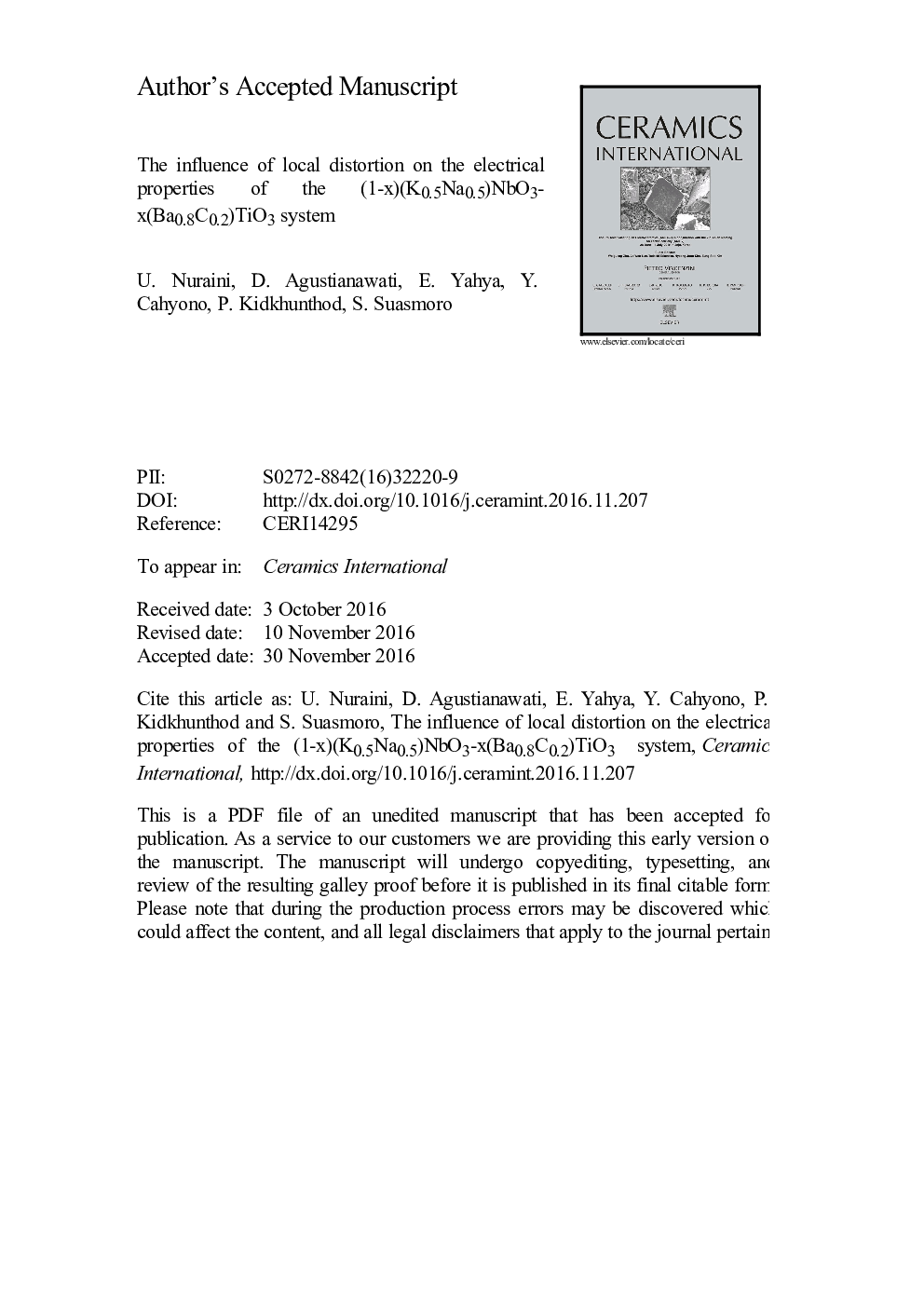| Article ID | Journal | Published Year | Pages | File Type |
|---|---|---|---|---|
| 5438916 | Ceramics International | 2017 | 26 Pages |
Abstract
In this work, the composition of (1-x)(K0.5Na0.5)NbO3-x(Ba0.8Ca0.2)TiO3 and the so-called (1-x)KNN-xBCT were successfully synthesised using a combination of solid-state reaction and co-precipitation oxalate methods. Phase identification and crystal structure determination were carried out by means of XRD pattern analysis. Local distortion due to the dopant was studied by XANES at the Nb L3-edge, XANES at the Ti K-edge, and EXAFS at the Ti K-edge. Electrical characterisation of dielectric properties and conductivity were investigated to elucidate the changes in local distortion. XRD analysis at room temperature concluded that while x=0 has an orthorhombic structure, x=0.1 and x=0.2 have as tetragonal structure. Furthermore, EXAFS analysis using Artemis revealed the oxygen octahedral distortion and distance of TiNbⲠto its surroundings. Conductivity measurements at various temperatures showed that at room temperature, all samples behave as positive charge carriers, and when the temperature is increased, the charge carriers become negative. The temperatures at which charge carrier alteration increases with increasing BCT content are: 150 °C for KNN, 180 °C for 0.9KNN-0.1BCT and 220 °C for 0.8KNN-0.2BCT. The characterisation of dielectric properties exhibited two Curie temperatures at 220 °C and 420 °C for KNN, while for KNN-BCT, the peaks shift to lower temperature and become broader, which is a typical relaxor characteristic and was thought to be related to the distortion of oxygen octahedral arrangement surrounding the B sites in the ABO3 structure.
Related Topics
Physical Sciences and Engineering
Materials Science
Ceramics and Composites
Authors
U. Nuraini, D. Agustianawati, E. Yahya, Y. Cahyono, P. Kidkhunthod, S. Suasmoro,
